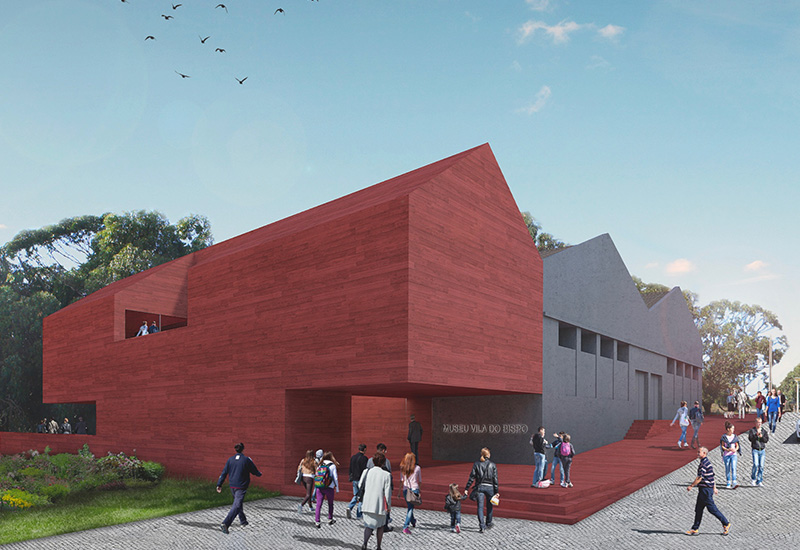On 22 January, celebrations took place in Vila do Bispo to mark the anniversary of the municipality and its patron saint, St Vincent. The climax to the celebrations was the unveiling of a sculpture, Renascimento de Pedra, (Rebirth of the Stone) by renowned artist and sculptor Renato Rodyer, a fitting tribute to this anniversary of the Algarve’s most important region.
The day’s proceedings were a culmination of a weeklong diary of events that included the inauguration of an exhibition of art, a concert with Antonio Zambujo, a procession in honour of St Vincent with the Bishop of the Algarve, Dom Manuel Quintas in attendance with the 1st May, Philharmonic Band. Then came the unveiling of the sculpture with appropriate eulogies.
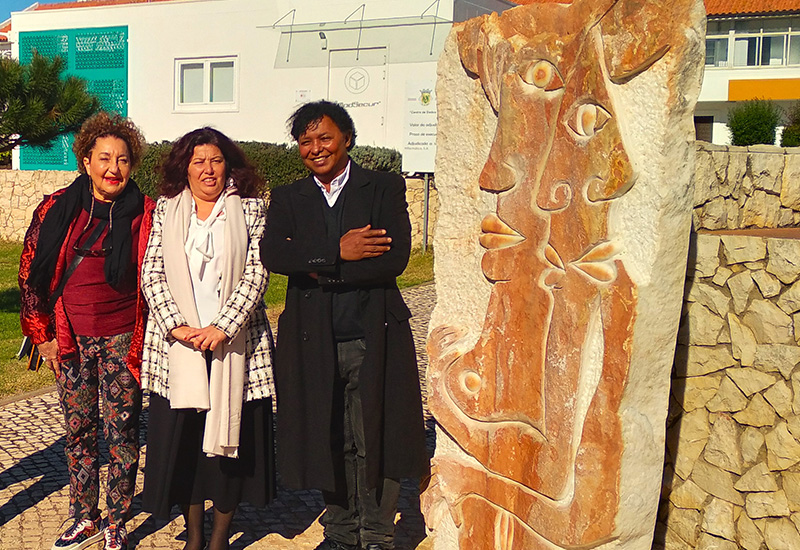
Art Co-ordinator Marci Gaymu, Mayor Rute Silva, Artist Renato Rodyer
The municipality of Vila do Bispo encompasses the south coast of Portugal from Burgau to Sagres, north eastwards to the beach of Praia da Murração and east and southeast to Burgau via Barão de São Miguel. It has a population of only 5,717 souls (2021), but what it lacks in headcount it certainly makes up for in its extraordinary history – and by history, I mean aeons of time back to the Mesozoic era.
A huge drive is underway to complete a museum for the region, a project beset by financial problems. Now, with new energy and promises of more funding, the museum is scheduled to open sometime during the summer of 2023. The museum will be named the Celeiro da História (the Barn of History) in recognition of the building and the region, formerly known as ‘the granary of the Algarve’.
Everyone will be welcome to visit the new facility but Vila do Bispo’s archaeologist, Senhor Ricardo Soares, emphasised that primarily it will be for the education of the “local people who have contributed so much and should benefit from our history and the origins of our culture”.
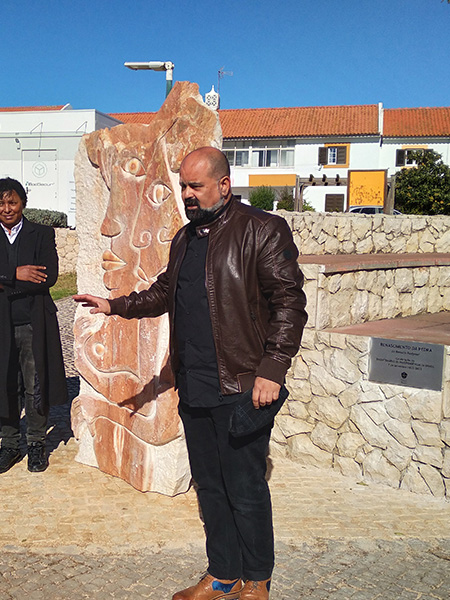
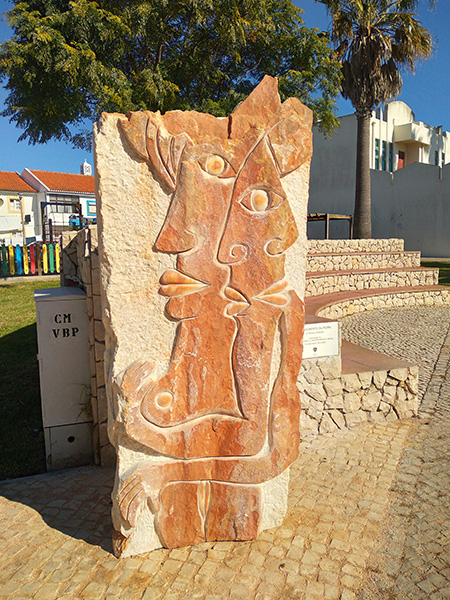
The story of the region begins with an exhibit from millions of years ago, casts of footprints taken from dinosaurs that can be seen today on Salema beach. Bone displays from the Paleolithic period indicate the presence of Neanderthal man around 34,000 years ago. From the archaeological site of Cabranosa near Sagres, axes and ceramic artifacts have been found.
“The colour of the museum will be red to depict the stoneware that marks the Ponta do Telheiro, the geological monument of the county. But a museum is about its content. Every day someone arrives with a photo, a story, or an artifact.
The other day a huge Tramagal threshing machine was offered by the owners of a local farmhouse,” explained Soares.
The museum will also feature megaliths. According to Soares, the municipality has the greatest concentration of menhirs in the Iberian Peninsula and the oldest in Western Europe. The stone monoliths of Vila do Bispo number around 280.
Roman ruins are no secret to the Algarve either. A recently excavated site at Boca do Rio unearthed some spectacular mosaics. They were removed in 2009 for restoration and will be displayed in the new museum along with the story of the ruins.
The county has a rich maritime history – from the great explorers to the actions of war and the fishermen of more recent times. Many will know that the most southwestern point in Europe is at Sagres, Cape Saint Vincent. Sagres has a fort, a ruin, a maritime museum, a famous lighthouse, a statue of Henry the Navigator and a secure harbour.
The much-anticipated new museum will display its own maritime section depicting, among other things, the Battle of Lagos, fought off the coast of Salema, where the French flagship Océan was sunk by the British. An underwater archaeological expedition in the 1970s found the wreck and managed to raise several cannons. They were sent to Lisbon but will be returned to Vila do Bispo to add to the display in the new facility.
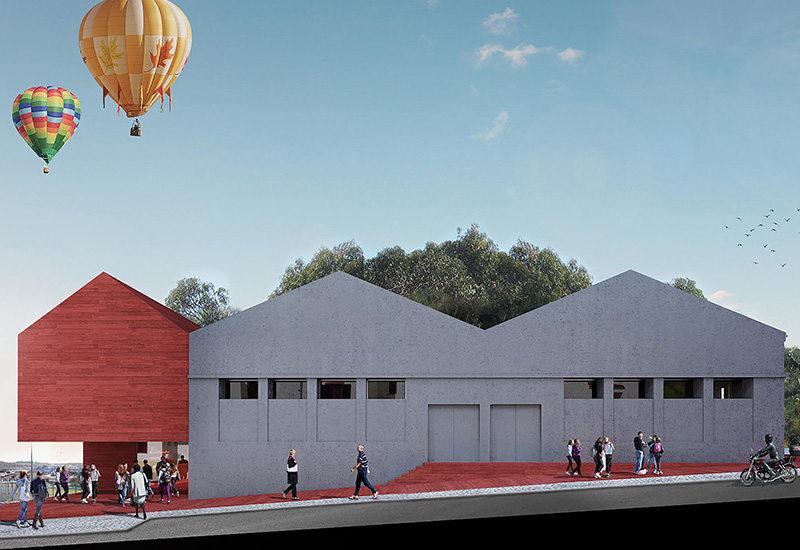
There will be photographs from both world wars, including a section on the German U-boat U35 that, on 24 April 1917, sank four foreign ships off Sagres.
Flora and fauna will not be excluded. The unique and endemic species of a strange-looking tadpole shrimp, Triops Vicentinus, will also be highlighted, as well as rare and unusual plants and herbs.
Senhor Soares is very enthusiastic about the project. “We have so much in the way of history, artifacts, photos, films and exhibits that displays will have to be rotated. This will not only add interest but will encourage repeat visits. The many and various displays will not just be in sterile glass cases. We are anticipating interactive scenarios – to make learning and experiencing fun. A 50-seat auditorium for films, shows and seminars will be incorporated into the facility.”
After the ceremony, artist and sculptor Renato explained his inspiration for his sculpture, which was a donation offered by the artist after meetings with art consultant and co-ordinator Marci Gaymu. The material is marble – it has a brown facade but is white in the middle. The figures represent his vision of people of different races coming together, but the one turning away depicts separation by Brazilian independence.
The nearby plaque announces Renascimento de Pedra, and underneath, it states a celebration of Brazil’s independence from Portugal, ‘Bicentenario de Independencia do Brasil, 7 de Setembro 1822 –2022.’
This museum will be a celebration of the history of Vila do Bispo and a wonderful learning facility for future generations. It is bound to become a favourite of visitors and tourists to the region. Keep your ears open for an announcement of an opening date.
